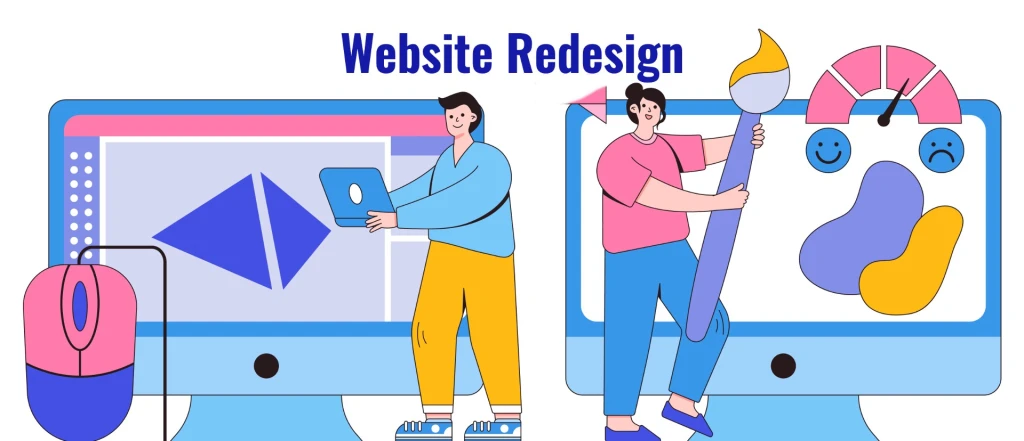Creating a successful WordPress blog website is a blend of thoughtful design, technical knowledge, and ongoing maintenance. Click here In this article, we’ll explore nine essential tips that will guide you through WordPress website development, design, and redesign, ensuring your blog stands out in 2024.
1. Define Your Goals and Audience
Align Content with Your Purpose
Every blog has a unique purpose, whether it’s sharing personal experiences, offering expert advice, or promoting a business. Clarify what you want your site to achieve and how your content will meet those objectives. If you’re focusing on providing tutorials, you may need to include a lot of instructional content. For an e-commerce blog, your content should highlight products and sales.
Know Your Target Audience
Knowing who your audience is will help you tailor both design and content. Are you writing for professionals, hobbyists, or general readers? Audience demographics and preferences should influence your tone, style, and visual design, ensuring it resonates with your visitors.
2. Choose the Right WordPress Theme
Consider Speed and Performance
Speed is critical for user retention and SEO. Choose a lightweight, fast-loading theme to ensure your blog performs well. Themes like Astra, GeneratePress, and OceanWP are known for their speed and flexibility. Check the theme’s demo on different devices to ensure responsive design across screens.
Ensure Compatibility with Plugins
While themes determine the look, plugins define functionality. Make sure the theme you choose is compatible with essential WordPress plugins, such as SEO plugins (Yoast or RankMath), performance-enhancing tools (W3 Total Cache), and design tools like Elementor.
3. Optimize for SEO
Use SEO Plugins
Installing SEO plugins, such as Yoast or RankMath, is the first step. These plugins help optimize titles, meta descriptions, and content by analyzing keyword usage and suggesting improvements. They also guide you in structuring your content for better rankings.
Focus on On-Page SEO
Ensure your posts are optimized for SEO by incorporating relevant keywords, optimizing image alt texts, and adding internal links. Structuring your content with proper headings (H1, H2, H3) and using short, descriptive URLs will further boost your SEO efforts.
4. Customize Essential Pages
Craft a Compelling About Page
Your About page is where you introduce yourself and your blog’s mission. Be sure to craft an engaging and authentic story that aligns with your brand. Click here It should also include a call-to-action (CTA), like encouraging visitors to sign up for your newsletter or explore your latest content.
Build a Contact Page
Your Contact page is crucial for interaction with your readers. Include an easy-to-use contact form with a plugin like Contact Form 7. Offering various methods of communication, such as email or social media links, also enhances user engagement and trust.
5. Mobile Responsiveness
Test Across Devices
Before publishing your site, test it on different devices, such as smartphones, tablets, and desktops. Check for readability, button placement, and overall design aesthetics. Tools like Google’s Mobile-Friendly Test can help identify areas for improvement.
Optimize Load Time on Mobile
Mobile users expect fast access to content. Slow load times can lead to high bounce rates. Compress images, minimize JavaScript, and leverage caching to speed up your mobile website. A good mobile experience can significantly impact your SEO rankings as well.
6. Focus on Quality Content
Publish Regularly
Keep your content fresh by posting regularly. A consistent content schedule not only boosts SEO but also helps build a loyal readership. You can create an editorial calendar to stay organized and maintain regularity.
Engage Your Audience
Engage your audience by asking questions, encouraging comments, and responding promptly. Click here Interactivity builds a community around your blog, which enhances reader loyalty and boosts engagement.
7. Add Essential Plugins for Functionality
Install a Caching Plugin
Speed is vital for user experience and SEO. Installing a caching plugin like W3 Total Cache or WP Super Cache helps reduce load times by caching static content and improving page speed.
Use Analytics and Security Plugins
Google Analytics is essential for tracking your site’s performance, while security plugins like Wordfence can help protect your site from cyber threats. Regularly monitor your site’s analytics to gauge what content works best and adjust accordingly.
8. Ensure Site Security
Use Strong Passwords and User Roles
Enforce strong password policies for all users with administrative access. Additionally, assign appropriate user roles and permissions to minimize the risk of accidental or malicious changes to your site.
Regular Backups and Updates
Schedule regular backups using plugins like UpdraftPlus. This ensures you can quickly recover your site if something goes wrong. Keep WordPress core, themes, and plugins up to date to avoid security vulnerabilities.
9. Ongoing Maintenance and Updates
Update Content and Plugins Regularly
Keep your blog posts up to date with the latest information. Additionally, regularly update plugins and themes to ensure compatibility with the latest WordPress version. Click here This also helps with security, as older versions may contain vulnerabilities.
Test and Improve User Experience
Monitor how users interact with your blog. Use tools like Hotjar or Google Analytics to track user behavior. Identifying friction points or areas where users drop off allows you to improve the experience, increasing conversions and engagement.


